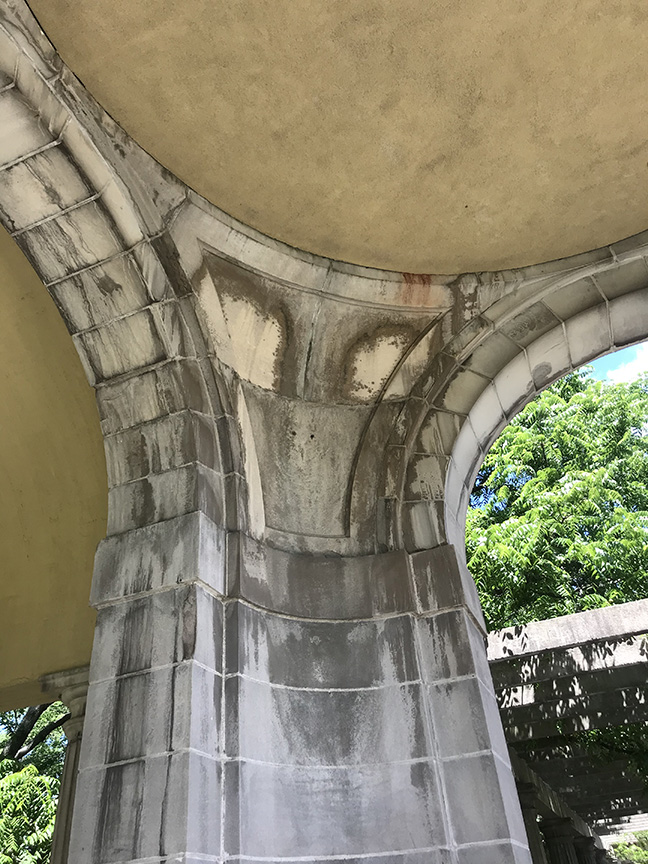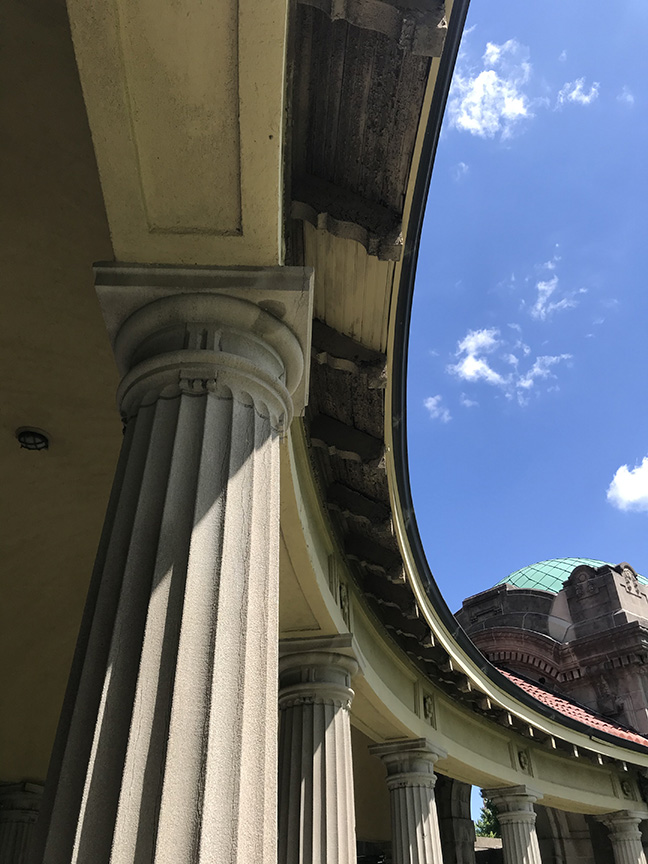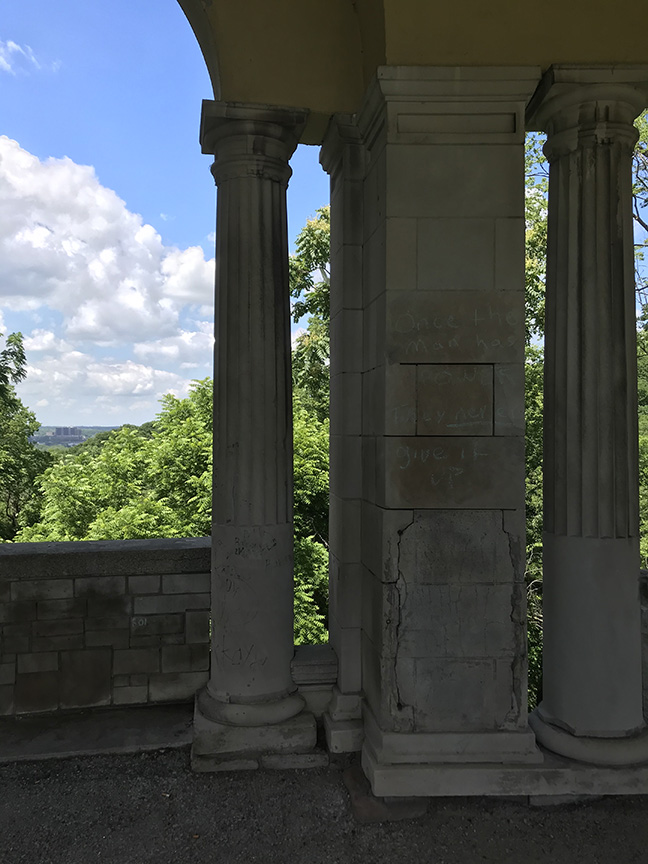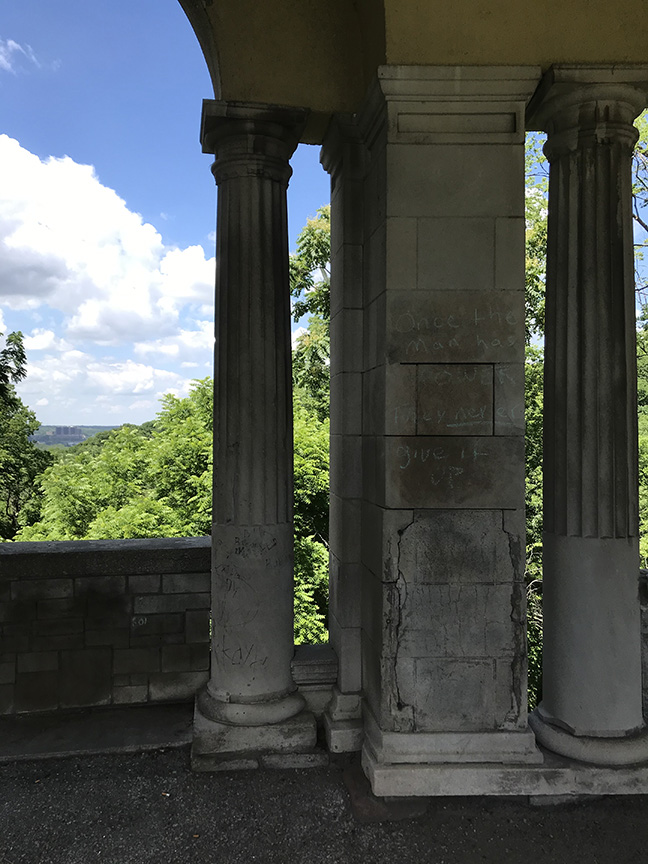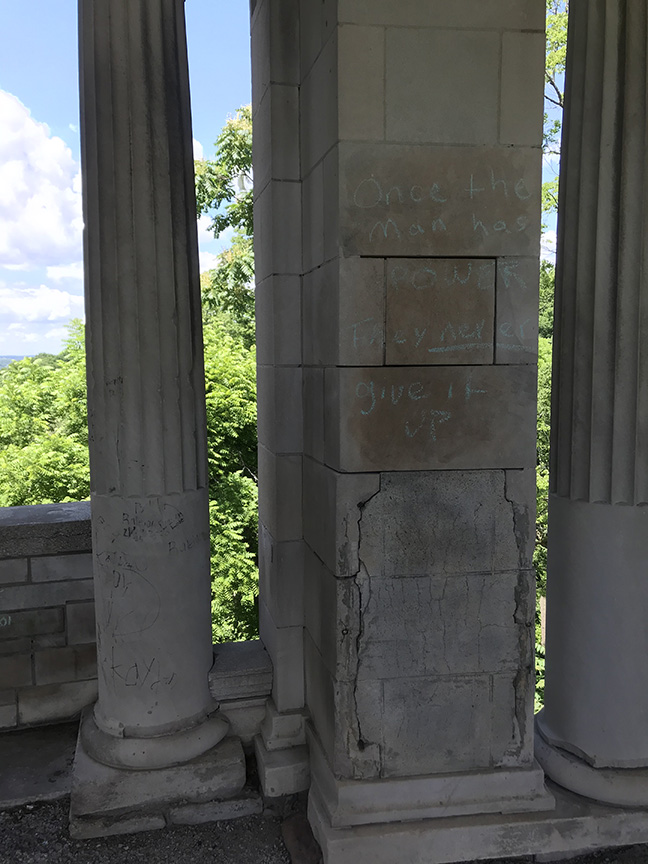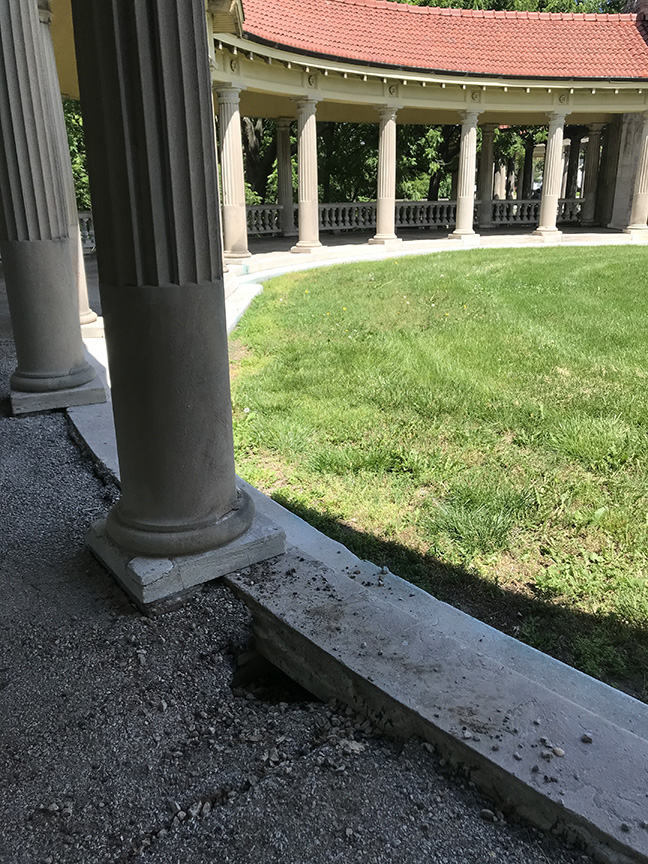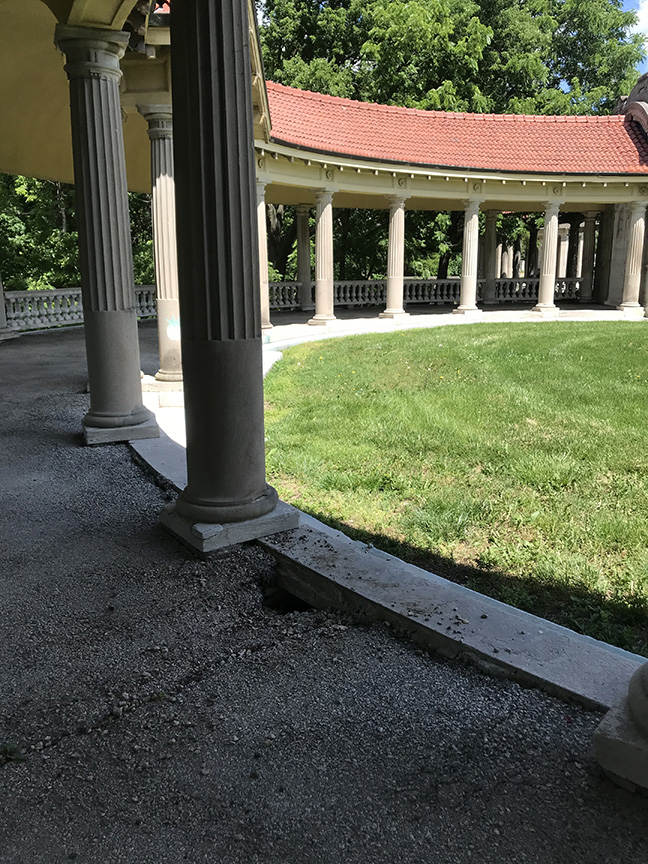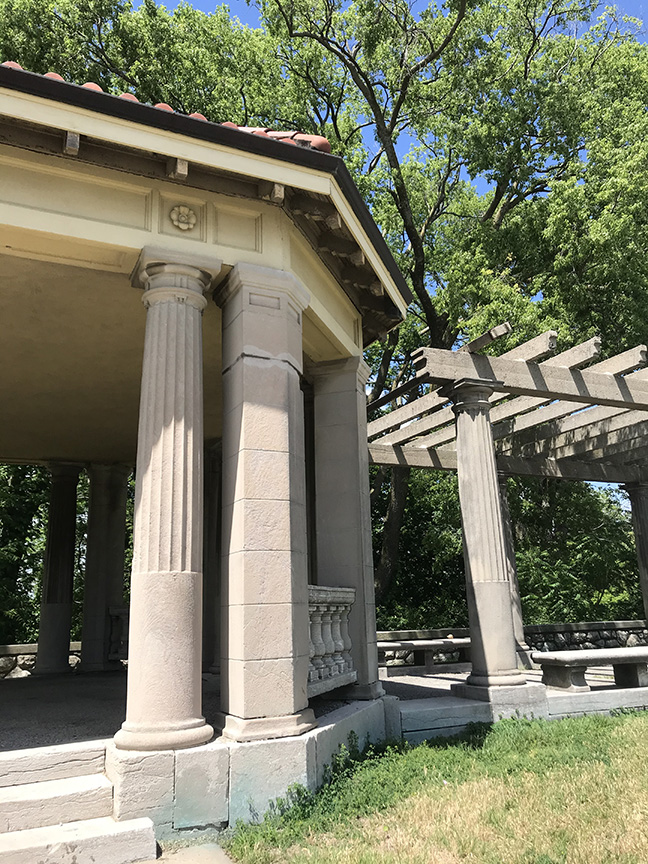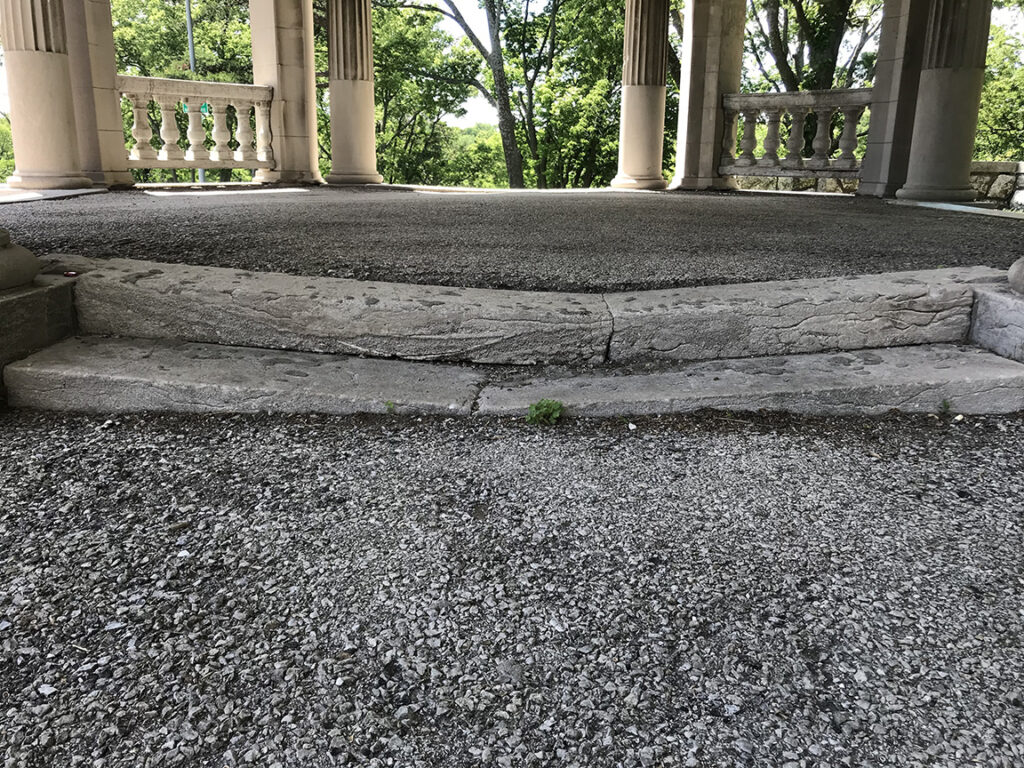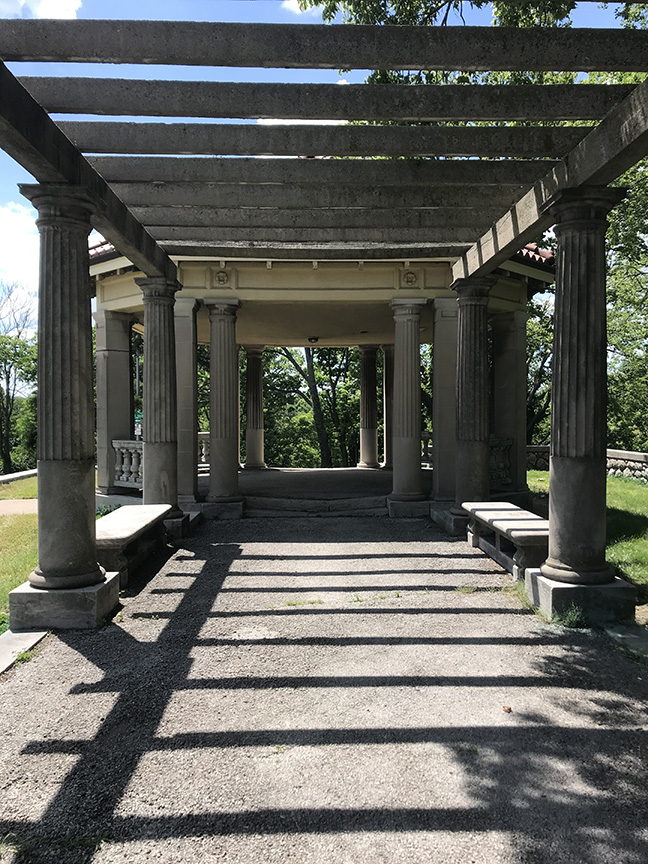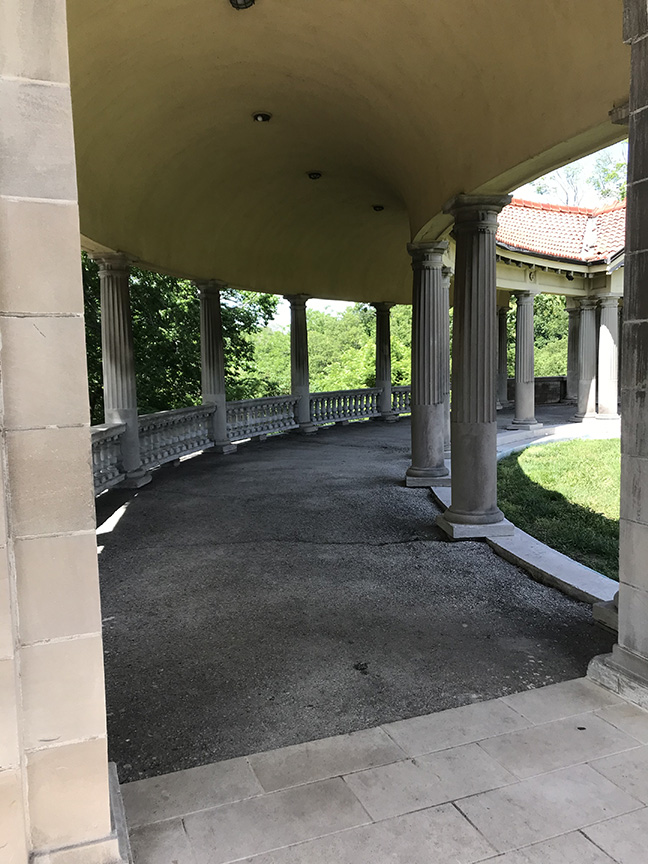
Nikki Lansford
Editorial Assistant
The Colonnade at Concourse Park is a historic landmark that means a great deal to many in the Northeast community – its image even serves as the emblem of the Northeast News – but the structure has fallen into disrepair after decades of neglected maintenance.
With structural concerns, a chipped roof and a dire need of new landscaping, the Colonnade can at best be described as in poor condition. Due to the state of the landmark, it has earned a spot on Historic Kansas City’s 2020-21 “Most Endangered Places” list.
“The list of Most Endangered Places calls attention to threatened unique resources throughout Kansas City and galvanizes the local community to help save them,” said Greg Allen, president of Historic Kansas City in a press release.
Located on Bellefontaine Avenue, the Colonnade is a historic Beaux Arts structure designed by Henry Wright. Wright worked in the office of George Kessler in St. Louis when the Kansas City Park Board requested in July 1906 that Kessler provide drawing for a structure. Kessler and Wright worked together on the design, which was completed in 1908.
A fountain, also designed by Wright, was added to the center of the structure in 1909, but would later be replaced by a memorial to John F. Kennedy by local American Legion Post 151 in 1965.
The structure is made out of reinforced concrete faced with smooth limestone and a red clay tile roofing with portions of open trellis – all of which are in need of repair.
“We applied to have [the Colonnade] on the Endangered Places List to get a little bit more attention around it,” said Jeff Linville, president of the Scarritt Renaissance Neighborhood Association (SRNA).
SRNA is leading the effort to save and restore both the Colonnade and JFK Memorial. The current estimate from Kansas City Parks and Recreation to restore the structure nears $600,000.
“This represents a significant financial undertaking for a department with already limited resources and tasked with maintaining over 12,000 acres of parkland,” according to the Historic KC article about the endangered Colonnade.
Linville said initially SRNA applied for the Public Improvements Advisory Committee (PIAC) grant in 2020 for the entire $600,000. They were denied the grant, so the group took on a new plan of action. They broke the repairs down into different phases to make the project more manageable with smaller dollar amounts.
The first phase of the plan is to repair and replace the roof tiles, gutters, ceilings, asphalt walkways and the pergola. It is estimated to cost $175,000 to complete, so SRNA applied for that amount in its 2021 PIAC grant application. Linville said he is unsure at this time if they were accepted for the grant.
“We’re hoping within the next year to have phase one started,” Linville said.
Phase two is estimated to cost $150,000. This money would go towards stone replacement, including the benches located on the structure and the limestone. Phase three would bring some updated features to the Colonnade with new ceiling lighting and electrical services, estimated to cost $125,000. Finally, the last phase would add new pedestrian lighting around the structure and staircases, which add up to $150,000.
Fundraising for the restoration has not begun yet, Linville said. He is currently looking to find someone who has experience in fundraising and is reaching out to organizations for donations.
Additionally, besides applying for grants and looking for organizers, SRNA is working to find other people and organizations to partner with to help with the project. Linville said they have reached out to a few organizations with this opportunity, but have had no promising leads so far.
When asked why it is so important to SRNA to save the Colonnade, Linville said, “It’s an important symbol for the whole historic Northeast. It’s a meeting place for photos, events, concerts… There’s also a lot of safety issues with it as well.”


